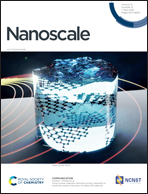Eliminating nonspecific binding sites for highly reliable immunoassay via super-resolution multicolor fluorescence colocalization†
Abstract
Non-specific adsorption in immunoassays has always been a major problem that affects the reliability of assay results. Despite the emergence of various methods that can reduce nonspecific adsorption, a universal and effective method to reduce the influence of nonspecific adsorption is still lacking. Hence, we propose here an optical super-resolution imaging based immunoassay strategy, named super-resolution multicolor fluorescence colocalization (SR-MFC), which can generate a low false-positive rate. Taking advantages of the high spatial resolution of single-molecule localization microscopy (SMLM), SR-MFC can directly visualize the assay results and thus effectively exclude the nonspecific binding sites. In other words, even if nonspecific interactions do happen, SR-MFC ensures that the nonspecific reaction sites are visualized and abandoned, which has never been achieved before. To verify its practicability, exosomes, which are important cancer biomarkers, were used as model targets and detected using SR-MFC. Compared with common immunofluorescence assay, the accuracy and reliability of the detection results are greatly improved. The detection limit of exosomes was 38 particles per μL. More importantly, the SR-MFC method can also be generalized for the detection of other biomarkers (e.g. proteins, DNAs, etc.), which is a significant and promising new strategy for immunoassay based diagnosis.



 Please wait while we load your content...
Please wait while we load your content...